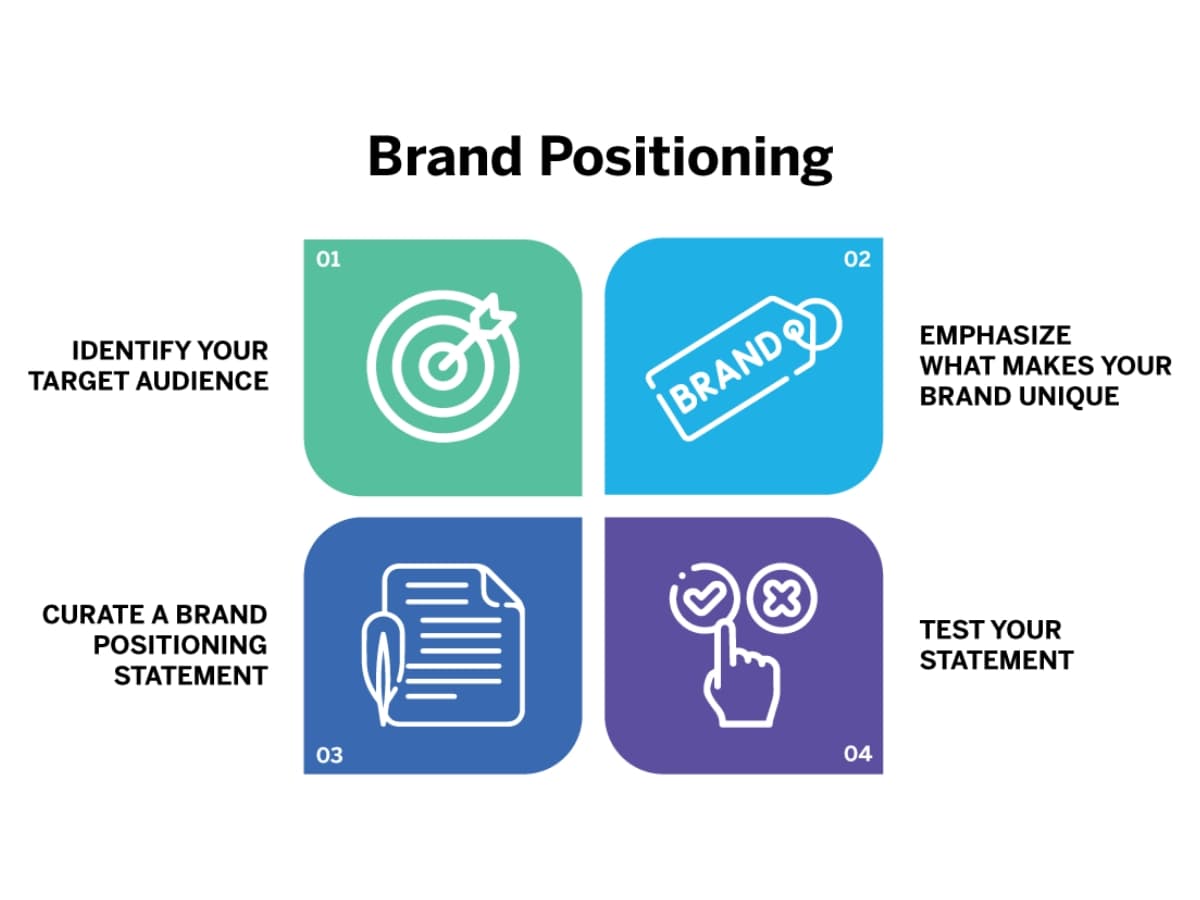Understand branding vs. marketing: one builds recognition, the other drives sales. Master both to boost your business and achieving your goals.
Introduction
Branding and marketing are two related yet distinct concepts that work together to build a successful business. At a high level, branding refers to the process of establishing an identity and reputation in the market while marketing refers to the strategies and tactics used to attract customers. Though the terms are sometimes used interchangeably, it’s important to understand the differences between branding and marketing.

Branding is about shaping how people perceive your company. It’s focused on the long-term and aims to establish an emotional connection with the audience. Marketing has a more short-term, tactical focus on lead generation, sales, and customer acquisition. Strong branding sets the foundation for effective marketing. When integrated successfully, branding and marketing create a powerful combination to drive growth.
A call to action section
A Call to action section made with Neve Custom LayoutsIn this guide, we’ll explore branding and marketing in more detail, including strategies and best practices for leveraging both to be successful. Understanding the unique roles of branding and marketing is key to maximizing the impact of both disciplines.
Branding

Branding refers to the process of creating a unique name and image for a product, service, or organization in the minds of consumers. According to Dayna Winter from Shopify, Branding is the process of creating a distinct identity for a business in the minds of your target audience and the general population. The goal is to establish brand identity and brand equity. Brand identity encompasses the visual aspects that identify a brand, such as color, design, logo, name, and symbol. Brand equity relates to the value of a brand and consumers’ perceptions and feelings about a brand.
The purpose of branding is to differentiate from competitors, establish credibility and trust, connect emotionally with the target audience, and motivate purchase decisions. By developing a strong brand identity, companies aim to build familiarity and favorability that translates into loyalty and repeat business. Branding also provides a competitive edge as a recognizable brand is more likely to be chosen over generic products.
Key elements in building a brand identity include defining the brand mission, promise, personality, essence, positioning, and identifying the target audience. Companies conduct brand research and analysis to uncover insights that guide brand identity development. Visual brand identity is crafted in the logo, color palette, fonts, and other design elements that express the brand’s style and personality. Branding goes beyond the visuals to focus on conveying a cohesive identity across every brand touchpoint and interaction.
The brand identity is brought to life through brand communication campaigns and marketing. Effective branding ingrains an image, feeling, and impression of the brand in consumers’ memories. The ultimate goal is to build brand equity, recognition, and loyalty that keeps customers coming back.
Marketing

Marketing refers to the strategies, tactics, and activities companies use to promote their products or services, connect with customers, and drive sales. ALEXANDRA TWIN from Investopedia explained that, Marketing refers to the activities a company undertakes to promote the buying or selling of its products or services. Marketing includes advertising and allows businesses to sell products and services to consumers, other businesses, and organizations. The main purpose of marketing is to inform potential customers about an offering and persuade them to make a purchase.
Some key marketing activities include:
- Conducting market research to understand customer needs, preferences, and problems that need solving. This allows companies to tailor products and messaging effectively.
- Developing branding and positioning to establish a unique brand identity and value proposition. This differentiation makes the brand stand out from competitors.
- Creating pricing strategies to optimize revenue while providing customer value. Tactics like discounts and bundling add incentive to buy.
- Promoting products through advertising across media channels like TV, radio, print, online, billboards, etc. The goal is to reach and influence the target audience.
- Managing public relations to build goodwill and garner positive media coverage. Activities include press releases, sponsorships, events, etc.
- Developing sales channels to make the product accessible to customers. This includes physical stores, e-commerce platforms, sales reps, retailers, etc.
- Creating content across formats like blogs, videos, infographics, ebooks, and more to attract and engage customers.
Effective marketing is critical for companies to acquire new customers, retain existing ones, compete with rivals, increase sales, and build brand awareness. It entails understanding customer insights, aligning activities to business goals, and continuously optimizing efforts based on metrics like ROI.
Relationship Between Branding and Marketing
Branding and marketing are closely intertwined and work together to build a strong, recognizable brand that attracts loyal customers. While they have different aims, effective branding strategies and marketing tactics complement each other.
Branding focuses on shaping customer perceptions of a company and its products. It establishes the identity, personality, and reputation of a brand in consumers’ minds. Marketing refers to strategies and tactics used to attract interest and generate leads and sales. It often directly promotes specific products through advertising, social media, events, etc.
An integrated branding and marketing approach aligns these efforts to convey a consistent brand image across all touchpoints. The brand identity and desired associations inform the tone, visuals, and messaging used in marketing campaigns. This strengthens brand recognition and makes marketing more effective.
For example, a lifestyle brand known for high-end, luxury products would incorporate those brand qualities into its marketing. Advertisements would feature sleek, upscale visuals conveying exclusivity. Marketing channels and partnerships would align with premium branding.
When branding and marketing work together, they allow a company to attract the right audience, build meaningful connections with them, and motivate purchase decisions. A strong brand identity makes marketing more persuasive by leveraging existing perceptions. Effective marketing then reinforces the desired brand image. This symbiotic relationship is key to success.
Branding Strategies
A strong brand is built on having a clear brand strategy and vision. This involves defining your brand positioning, personality, and promise.
Brand Vision

Your brand vision is your aspirational goal for what you want your brand to represent and achieve long-term. It’s the big picture of how you want consumers to perceive and relate to your brand. A brand vision inspires your branding efforts by providing direction and purpose.
Brand Positioning

Image source: Qualtrics XM
Brand positioning refers to how your brand occupies a distinct spot in the marketplace compared to competitors. It’s how you differentiate your brand in the minds of customers. Positioning involves identifying your target audience and their needs, pinpointing your competitors, and defining your brand’s unique value proposition.
Brand Personality

Your brand personality brings your brand to life by giving it human traits and characteristics. This creates an emotional connection with consumers by making your brand more relatable. When developing your brand personality, define the tone of voice, words, colors, and visuals you will use consistently across touchpoints. Align your personality with your target audience.
Marketing Strategies
Marketing strategies involve segmenting, targeting, and positioning your brand to connect with customers.
Segmentation

Segmentation involves dividing potential customers into groups based on demographics, psychographics, behaviors, and other factors. The goal is to identify specific customer groups to target. Common ways to segment include by age, gender, location, income level, lifestyle, values, interests, and more. Clearly defined customer segments allow for more effective marketing targeting.
Targeting

Targeting involves evaluating different customer segments and selecting the ones to focus marketing efforts on. An ideal target market is a specific segment that presents the greatest potential for your brand. Targeting narrows marketing campaigns to only reach your desired audience. Factors like segment size, growth potential, competition, and fit with your brand help determine which segments to target.
Positioning

Positioning involves defining how you want the target audience to perceive your brand. This is accomplished through marketing messaging, product offerings, pricing, distribution channels, and other touchpoints. Positioning aims to occupy a distinct place in the customer’s mind and differentiate from competitors. The goal is to convey the key brand benefits that make it the best choice for the target segment. Effective positioning guides marketing strategy.
Thoughtful segmentation, targeting, and positioning provides the foundation for connecting with customers in a strategic way. It enables tailored marketing campaigns that resonate with the audience and drive success. This strategic approach is at the core of marketing.
Creating a Brand Identity
A brand’s identity is composed of visual and verbal elements that communicate its personality. These elements help customers recognize and connect with a brand. Some key components of brand identity include:
Logo – A logo is a brand’s most identifiable visual asset. An effective logo is simple, memorable, and conveys the brand’s personality. Logos are used across all brand communications and marketing materials.
Tagline – A tagline is a short phrase that captures a brand’s mission or positioning. Great taglines are catchy and communicate the brand promise. For example, Nike’s “Just Do It” tagline conveys passion and drive.
Visuals – Visual assets like color, fonts, and imagery help communicate a consistent look and feel. Brands develop visual guidelines outlining approved visual elements and how they should be used across marketing channels. Using consistent visuals in all communications improves brand recognition.
A strong brand identity creates an emotional connection with the target audience. All elements of the brand identity should work together to reflect the brand’s personality and promise. Careful development of a logo, tagline, and visual identity helps differentiate a brand in the marketplace.
Integrated Branding and Marketing
Branding and marketing work best when aligned and consistent. An integrated approach connects branding and marketing strategies so they work together seamlessly. This creates a unified brand experience that resonates with target audiences.
Some tips for integrating branding and marketing include:
- Ensure brand identity permeates all marketing campaigns and materials. The look, voice, tone, and messaging should align with the overall brand.
- Make branding a central focus when planning marketing strategies. Consider how marketing campaigns can strengthen brand perception and equity.
- Leverage marketing as a brand touchpoint. Interactions via advertising, social media, website, etc. shape customer impressions of the brand.
- Maintain brand consistency across channels, campaigns, and over time. Customers connect repeated exposure to branding elements.
- Involve brand strategists and marketers in joint planning. Collaboration enables strategies to complement each other.
- Track performance to identify successful brand-building marketing tactics. Focus on initiatives that drive brand affinity.
- Educate all internal teams on the brand identity and guidelines. Employees’ actions impact brand perception.
With strategic alignment between branding and marketing, companies convey a unified brand story. An integrated approach enhances recognition, shapes preferences, builds loyalty and ultimately drives business success.
Measuring Success
When it comes to branding and marketing, it’s important to measure success in order to determine if your efforts are paying off. Here are some key metrics to track:
Brand Awareness

- Brand recall – How easily can people recall your brand when prompted? Use surveys to test.
- Social media followers and engagement – Are your followers growing? How often do people interact with your content?
- Website traffic – How many visitors do you get? Is traffic increasing over time?
- Media mentions – How often is your brand mentioned in the news or blogs?
Engagement

- Email open and clickthrough rates – How often do people open/click your emails?
- Time on site/pages per visit – Are people spending more time engaging with your content?
- Social media shares and clicks – How often is your content shared and clicked on?
- Sales inquiries – How many potential customer inquiries do you receive?
- Customer feedback surveys – What do customers say about your brand experience?
Conversions

- Sales revenue – Are sales increasing over time?
- Cost per lead/sale – How much does it cost to acquire customers? Is it decreasing?
- Customer lifetime value – How much revenue does each customer generate over their lifetime?
- User registrations – How many users sign up and create accounts?
- Email subscription rates – How many subscribe to receive ongoing communications?
Tracking these branding and marketing metrics on a consistent basis will allow you to gauge performance and make data-driven decisions to optimize efforts. The key is to focus on the numbers most aligned with your specific goals.
Key Takeaways
Branding and marketing work hand in hand to build a successful business, although they have different objectives. Key takeaways include:
- Branding creates a unique identity for a company and focuses on connecting emotionally with the target audience to build loyalty. Marketing aims to generate leads and sales through promotional campaigns and messaging.
- Strong branding makes marketing efforts more effective by establishing awareness, recognition, and trust. Without branding, marketing lacks focus and direction.
- Core branding strategies include defining brand identity and values, creating visual assets and guidelines, communicating consistently, and delivering on brand promise. Marketing strategies focus on understanding the target audience, crafting campaigns, choosing channels, and measuring results.
- An integrated approach to branding and marketing allows a unified brand experience across all customer touchpoints. This requires collaboration between teams to align strategies, messaging, visuals, and more.
- Measuring branding success involves brand awareness, perception, engagement and loyalty metrics. Marketing metrics focus on leads generated, conversions, sales, and ROI. Evaluating both provides a comprehensive view of performance.
- When done effectively, branding builds a foundation for marketing success. Together they convey brand story and personality, acquire and retain customers, and drive business growth.
Conclusion
Branding and marketing are two sides of the same coin. Branding establishes a strong identity and emotional connection with your target audience, while marketing uses targeted strategies to promote your offerings and drive sales. Both disciplines are crucial for building a successful business.
By understanding the distinct roles of branding and marketing, and by integrating them strategically, you can create a powerful and unified brand experience. This will not only enhance brand recognition and customer preference, but ultimately lead to increased sales and business growth.
This guide has provided a comprehensive overview of branding and marketing, including key elements, strategies, and best practices. Now it’s up to you to implement these strategies and create a brand that resonates with your target audience and achieves long-term success.